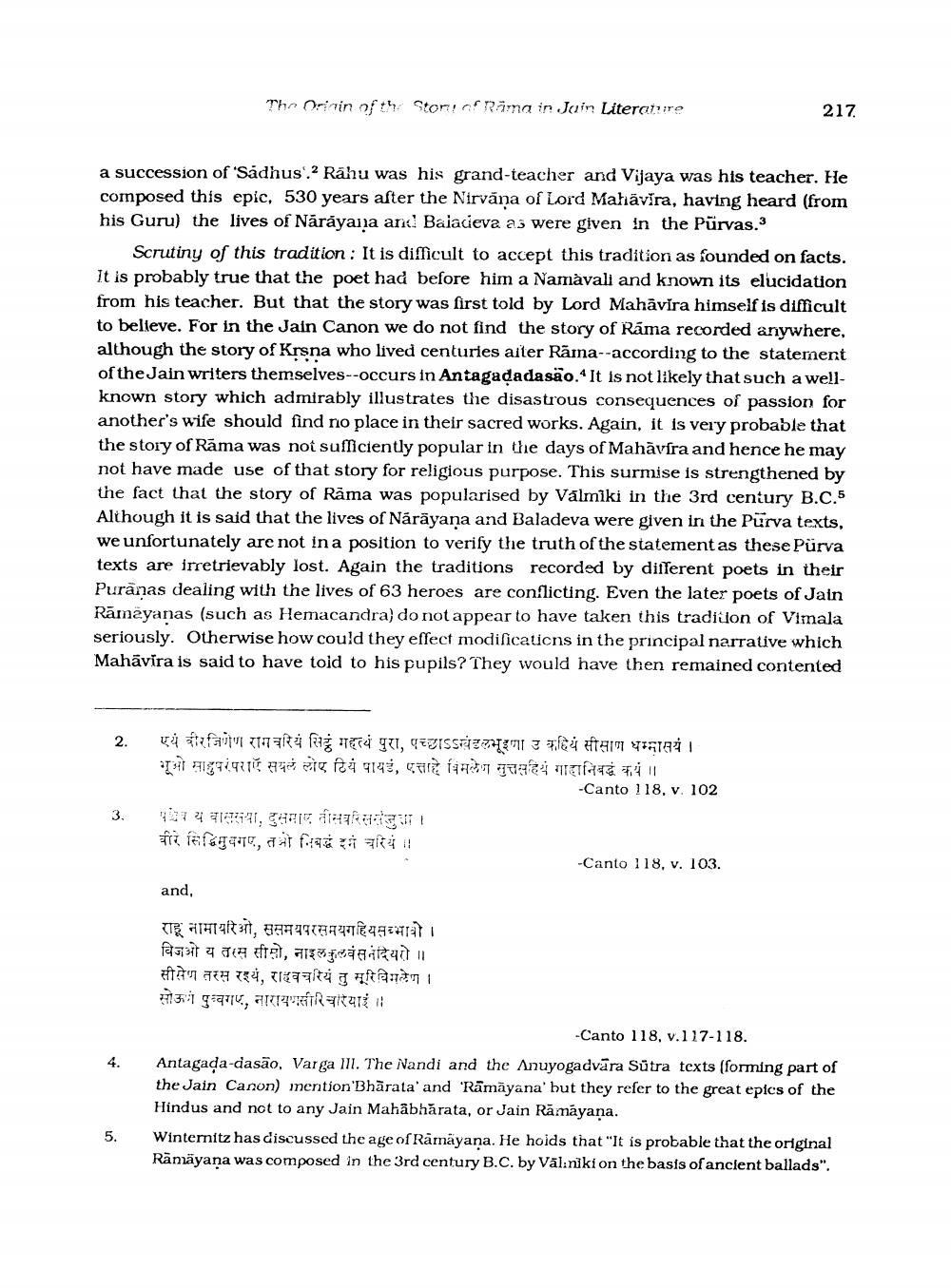________________
The Orinin of th
Stor of Rama in Juin Literature
217
a succession of 'Sadhus. Rahu was his grand-teacher and Vijaya was his teacher. He composed this epic, 530 years after the Nirvana of Lord Malāvira, having heard (from his Guru) the lives of Narayana and Baladieva a3 were given in the Pürvas.3
Scrutiny of this tradition : It is difficult to accept this tradition as founded on facts. It is probably true that the poet had before him a Namavali and known its elucidation from his teacher. But that the story was first told by Lord Mahāvira himself is difficult to believe. For in the Jain Canon we do not find the story of Rama recorded anywhere, although the story of Krsna who lived centuries aiter Rāma--according to the statement of the Jain writers themselves--occurs in Antagadadasäo. It is not likely that such a wellknown story which admirably illustrates the disastrous consequences of passion for another's wife should find no place in their sacred works. Again, it is very probable that the story of Rama was not sufficiently popular in the days of Mahāvíra and hence he may not have made use of that story for religious purpose. This surmise is strengthened by the fact that the story of Rama was popularised by Válmiki in the 3rd century B.C.5 Although it is said that the lives of Nārāyana and Baladeva were given in the Purva texts, we unfortunately are not in a position to verify the truth of the statement as these Purva texts are irretrievably lost. Again the traditions recorded by different poets in their Puranas dealing with the lives of 63 heroes are conflicting. Even the later poets of Jain Ramayanas (such as Hemacandra) do not appear to have taken this tradition of Vimala seriously. Otherwise how could they effect modificaticns in the principal narrative which Mahāvīra is said to have toid to his pupils? They would have then remained contented
2.
एय बीरजिणेण रागवरिय सिष्टुं मह्त्यं पुरा, पच्छाऽऽबंडलभूइणा उ कहियं सीसाण धम्मासयं । भूमओ साहुपरंपरा सपलं लोप, ठियं पायर्ड, पत्ताहे विमलेण सुत्तसहियं गाहानिबद्धं कयं ।।
-Canto 118, v. 102 पंचव य वातस्या, दुसमाप तीसवरिलजुता। वीरे सिद्धिमुदगए, तो निबद्धं द चरियं ।।
-Canto 118, v. 103. and,
राडू नामायरिओ, ससमयपरसमयगहि यसम्भावो । विजओ य तरस सीसो, नाइलकुलवंसनंदियरो॥ सीसेण तरस रइय, राहवचरियं तु मूरि विमलेण । सोऊग पुवगर, नारायणसीरिचारयाई ।।
-Canto 118, v.117-118. Antagada-dasão, Varga Ill. The Nandi and the Anuyogadvara Sutra texts (forming part of the Jain Canon) mention'Bhārata' and 'Rāmāyana' but they refer to the great epics of the Hindus and not to any Jain Mahâbhărata, or Jain Rāmāyaṇa. Winternitz has discussed the age of Ramayana. He hoids that "It is probable that the original Ränäyana was composed in the 3rd century B.C. by Väliniki on the basis of ancient ballads".




